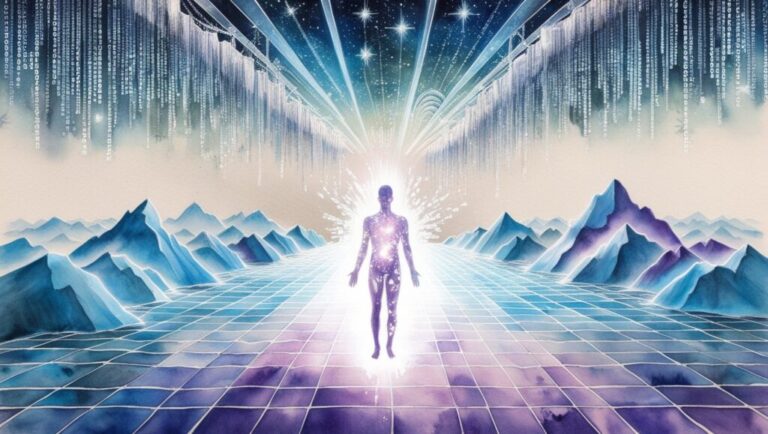How Are Fractals Used in Nature 2025
How Are Fractals Used in Nature 2025
Fractals are complex geometric shapes that exhibit self-similarity—meaning they look similar at different levels of magnification. Though they might seem like abstract mathematical constructs, fractals are deeply embedded in nature. From the pattern of tree branches to the structure of snowflakes, fractals provide a blueprint that nature often follows to build intricate, efficient, and beautiful designs.
Book-Based Explanation (University Level)
What Are Fractals?
Fractals are mathematical sets that exhibit a repeating pattern at every scale. They are often defined by recursive algorithms or functions. Mathematically, a fractal has:
- Self-similarity: Each part of the fractal is a smaller version of the whole.
- Fractional Dimension: Unlike lines (1D), planes (2D), or volumes (3D), fractals can have non-integer dimensions.
- Iteration: Fractals are generated through repeated applications of mathematical rules.
One classic example is the Mandelbrot set, a fractal defined by a simple equation involving complex numbers. It reveals infinite complexity when zoomed into.
Fractals in Nature
Nature doesn’t produce perfect mathematical fractals, but many structures resemble them in form and behavior.
- Trees and Leaves
- Branching patterns in trees follow a fractal geometry. A trunk branches into limbs, limbs into smaller branches, and so on.
- Fern leaves and pine needles show self-similarity—each small frond looks like the whole leaf.
- River Networks
- River systems form branching patterns, similar to tree roots, following predictable fractal dimensions. The structure aids in efficient drainage and flow.
- Lungs and Blood Vessels
- Human lungs have bronchi that branch out into bronchioles and alveoli in a fractal-like pattern. This maximizes surface area for gas exchange.
- Blood vessels also branch out in a fractal pattern to efficiently supply oxygen and nutrients to tissues.
- Coastlines and Mountains
- Coastlines appear more jagged and detailed the closer you zoom in—a key characteristic of fractals.
- Mountain ranges show rough, repeating structures at multiple scales.
- Snowflakes and Crystals
- Snowflakes exhibit radial fractal symmetry. The growth of ice crystals follows rules that create intricate, self-similar structures.
- Clouds, Lightning, and Galaxies
- Cloud formations show fractal-like edges.
- Lightning bolts branch similarly to trees and rivers.
- Even large-scale cosmic structures like galaxy distributions reveal fractal patterns.
Why Nature Uses Fractals
- Efficiency: Fractals allow maximum coverage with minimal material—like the surface area of lungs or leaves.
- Adaptability: Self-similar structures make it easier for systems to grow or repair themselves.
- Energy Distribution: Fractals help distribute energy (like in lightning or river flows) efficiently.
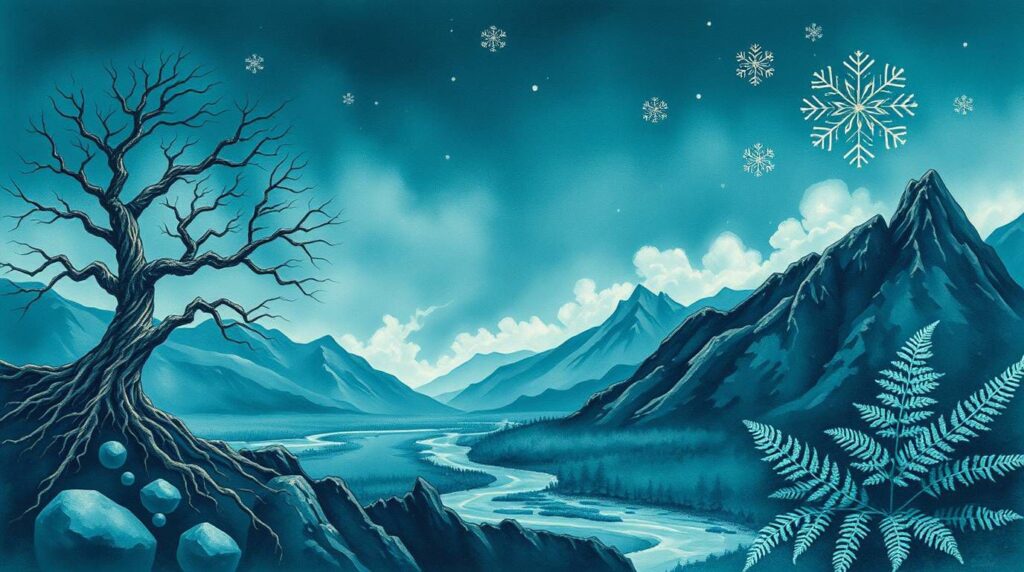
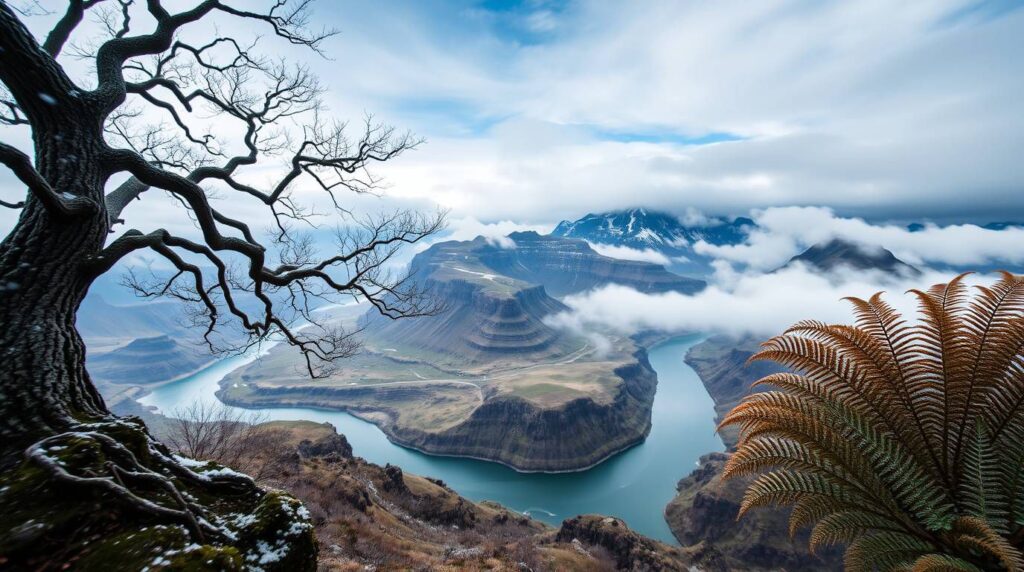
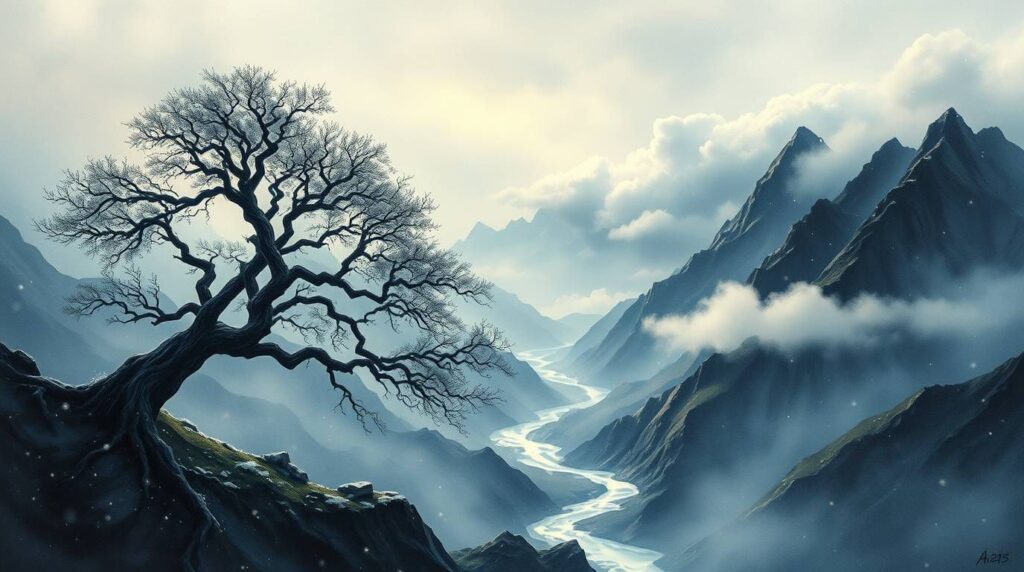
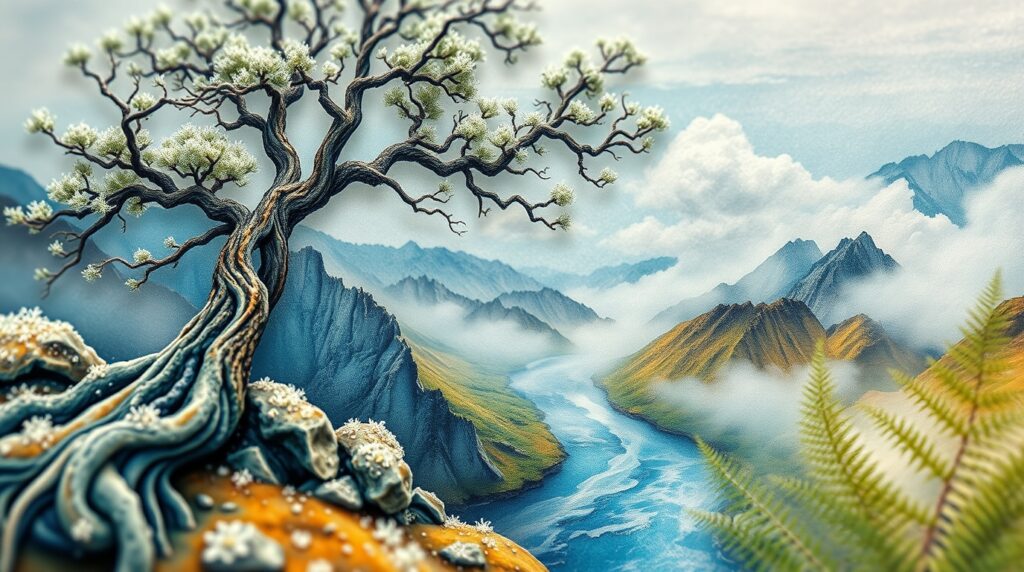
Easy Explanation (With Examples)
Let’s say you take a tree. You notice how the big trunk splits into big branches, then smaller ones, and then tiny twigs. That’s a fractal pattern! No matter how close you look, the same shape keeps repeating.
Here are a few cool and simple ways fractals appear in real life:
- Broccoli and Cauliflower (Especially Romanesco)
- If you break a Romanesco cauliflower into pieces, each piece looks like a mini version of the whole. That’s a fractal!
- Snowflakes
- Every snowflake has a pattern that looks the same on every arm and keeps repeating as it gets smaller.
- Lungs
- Imagine you had to fit a super-large surface area into a small chest. Nature does it by folding and branching like a fractal.
- Lightning
- Ever seen lightning in the sky? It doesn’t go straight down. It branches out in all directions, just like tree branches—another fractal.
- Clouds
- The puffiness of clouds and their shapes repeat in smaller versions the closer you look.
- Ferns
- Each small part of a fern leaf looks like the entire leaf. That’s self-similarity—one of the coolest things about fractals.
So, nature uses fractals because they help in spreading things out, fitting big things into small spaces, and making beautiful patterns that repeat over and over again.
Disclaimer:
The easy explanation is designed to help students understand concepts clearly using simple language and relatable examples. For academic and examination purposes, always rely on the structured, book-based explanation above. We’re here to make learning easier, but scoring well still depends on how appropriately you apply this knowledge in your classwork and exams.
External Resource:
Want to learn more about fractals in nature?
Check the Wikipedia page:
Fractal
https://en.wikipedia.org/wiki/Fractal
Related Articles from EdgyThoughts.com:
- Why Is Zero So Powerful in Math 2025
https://edgythoughts.com/why-is-zero-so-powerful-in-math-2025 - What If Dreams Could Be Recorded and Played Back 2025
https://edgythoughts.com/what-if-dreams-could-be-recorded-and-played-back-2025





